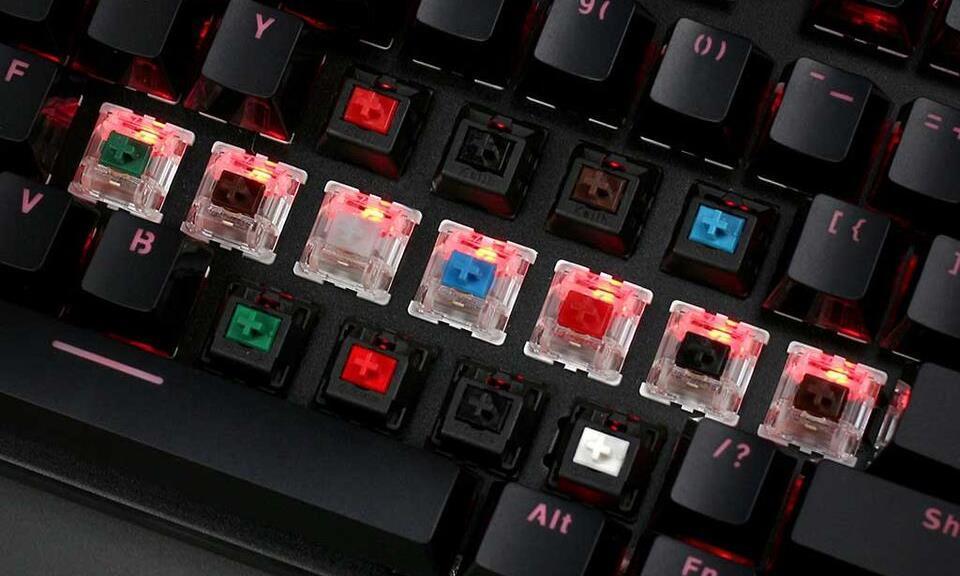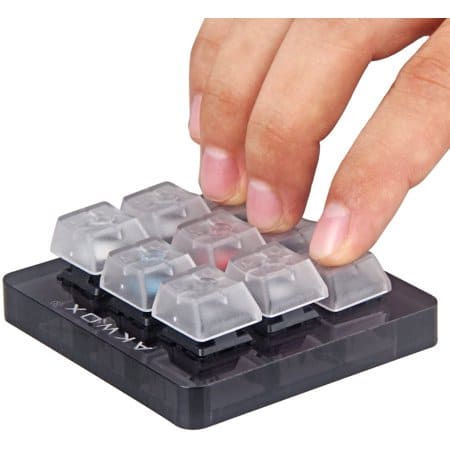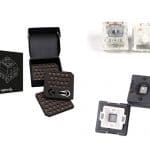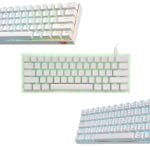
The best thing about mechanical keyboards is that you can choose or customize the feel of the switches. This is because there are different kinds of switches available in the market.
There are three main switch types: linear switches, tactile switches, and clicky switches. The main difference between the three is the sound and feel. Both tactile and clicky switches have a tactile bump while a linear switch is fast and smooth. Clicky switches are the loudest of the three switches.
If you wish to learn more about the difference of each switch type, then you have come to the right place. In this article, we will be learning about different mechanical switch types in more detail.
We’ll go over the difference in their sound and feel. And by the end of this article, you should know which one is right for you.
Linear Switches
Linear is just straight down; a key goes straight down. You press a key, and you don’t feel the actual actuation point where the key registers. A lot of Gamers usually use this type of key switch because they want quick reaction time.
They want to press the button and see the immediate response. When you’re typing, you don’t want to, like I accidentally kind of brush on it or something and then get many mistakes.
So I got a linear key switch-type keyboard. I used it for gaming, and then I tried to do some typing, and I just had so many mistakes. So if you want to use your keyboard just for gaming, then go linear.
Tactile Switches
If you wanted to do typing and gaming and get the best of both worlds, I would go with tactile. That’s what I got with the MX Cherry Browns. Using tactile, you can feel a little bump before it actually registers on the computer. You can hear it too.
There’s like a little bump before it registers. This gives the confidence that you are pressing the right key that you want with no accidental key presses. with the benefit of not having a clicky sound like the clicky type
Clicky Switches
The third type is clicky, which is pretty much like tactile, except there’s even more of a bump and there’s a clicky sound. Some people like that.
Some people will find that incredibly annoying for typing. Some people might find that satisfying. Some people might find that like nails on a chalkboard. It’s up to you.
I Personally like cherry MX blue switches that are clicky. I like the feel of the pump and the clicky sound, even though I do many typing. I work from home.
I don’t mind the sound, but you might be annoying your coworkers if you are in an office. Some office spaces even ban the use of clicky switches altogether.
Difference Between the Three Switch Types
So the easiest way to understand the difference between key switches would be based on two factors: the feel of the click and travel distance. They most likely denote those to factors as Actuation force and in mg and travel distance in mm.
Other than that, you have to look at the names because Cherry MX has their own switches, Logitech has their own switches. Razer has their own switches. So look into the different names and then look to whether tactile linear clicky and then you can see the different types based on the Actuation force and travel distance and some other minor factors.
Using a Key Switch Tester

If you still want to test the switches for yourself before buying a keyboard, then AKWOX 9-Key Cherry MX Switch Tester is what you need. It is a simple plastic base with 9 smokey transparent keys with green, blue, dark grey, clear, red, light grey, white, brown, and black cherry MX switches.
Something quite handy with this unit is the inclusion of O-rings to get a feel for a key switch that is dampened and one that’s not and if it’s not clear already. Unfortunately, if you are to buy one of these, you’re more likely to spend a fair amount of time getting a feel for the differences between the switches and then trying to figure out which one you want to experience across an entire keyboard.

The KBE team is dedicated to sharing our knowledge and creating useful resources about computer keyboards. This article was written as a team collaboration, combining our knowledge and years of experience using, building and modding keyboards. Meet the team here.



